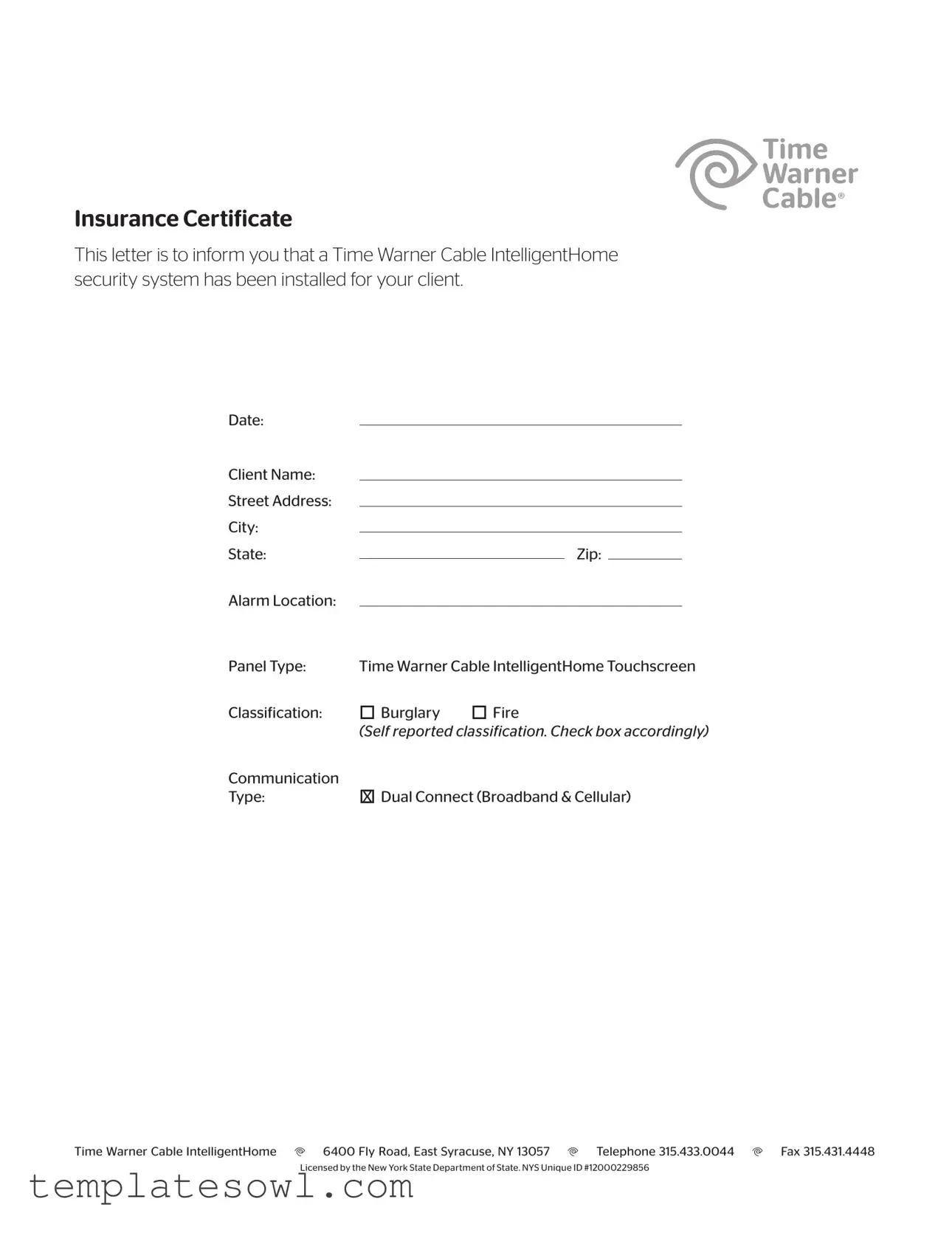The Intelligent Home Insurance Certificate is essential for homeowners who want to secure their properties and gain peace of mind through advanced security measures. This certificate acts as a formal notice that a Time Warner Cable IntelligentHome security system has been installed, providing crucial information for insurance purposes. Key details include the identity of the client, their address, the specific alarm location within the home, and the type of security panel installed. Moreover, it specifies the classification of the system, whether it is primarily set up for burglary or fire, which is self-reported and requires the homeowner's input. This form also outlines the communication type, which in this case utilizes dual connectivity, integrating both broadband and cellular options for maximum reliability. By having this document, homeowners can demonstrate to their insurance providers that robust security measures are in place, often leading to potential reductions in premiums. Time Warner Cable, based in East Syracuse, New York, is an authorized provider licensed by the New York State Department of State, ensuring the service's legitimacy with NYS Unique ID #12000229856. This article will explore the significance of this certificate, the advantages it brings to homeowners, and the implications for insurance coverage.

